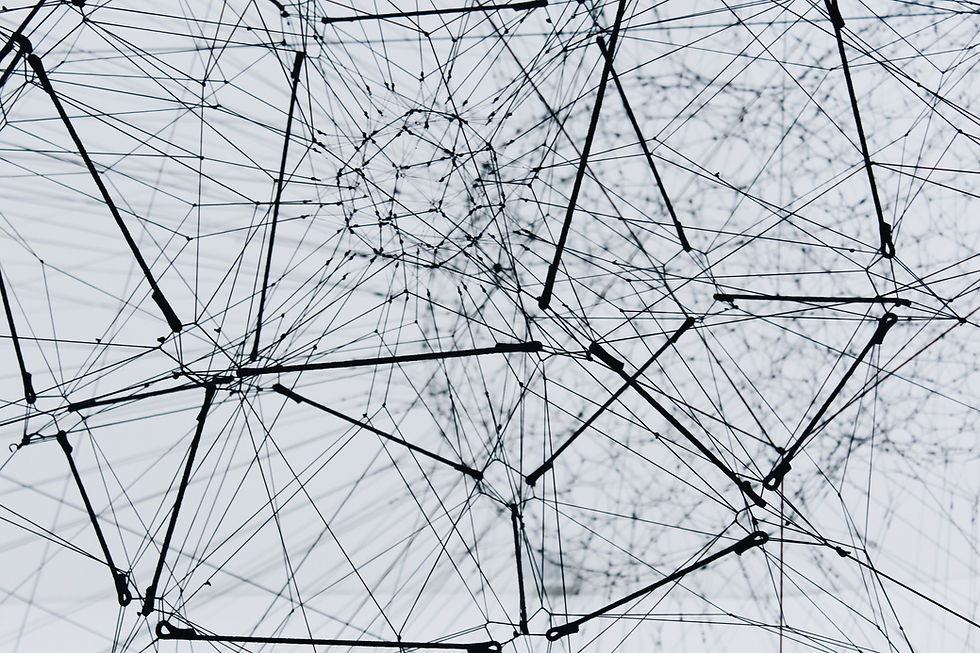Blockchain Technology and Big Data Are the Key To Ushering In the Next Industrial Revolution
- Minerva Singh

- Nov 21, 2021
- 3 min read

When they were conceived, blockchains were synonymous with Bitcoins and financial transactions. However over the past few years, blockchains are increasingly finding utility in many non-financial contexts, including supply chain management , music copyrighting and even the digital art and gaming space in the form of non-fungible tokens (NFTs). Apart from ushering in an era of decentralisation, blockchain technology is likely to have an impact on Artificial Intelligence (AI), Internet of Things (IoT), Big Daata and the thread that connect them- data analytics. Together all of these: blockchain, AI, IoT, Big Data are poised not only to change how we live and interact with the outer world, but also usher in the next Industrial Revolution.
Internet of Things (IoT) is bringing new and cheaper ways of establishing communication between electronic things such as home appliances, smart watches, among others. the Apple Watch is a quintessential example of IoT influencing our day to day life. Blockchain, on the other hand, offers transparency and immutability to create technological ecosystems which can run without a central oversight. With IoT comes the massive amount of data (or Big Data) that could benefit from the decentralised, yet rigorous protocols offered by the blockchain technology. AI technology can help derive insights from Big Data that we obtain from IoT and other sources. Data is the lifeblood of businesses in the 21st century businesses and these new technologies open new frontiers for data analytics along with paving the way to the next wave of innovation. Here are some examples of sectors are being transformed by the confluence of these technologies.
1) Banking: The role of Big Data and AI is well-estabilished in banking. Within the banking context, both Big Data and AI have complimented each other to support predictive analytics (i.e. inferring future behavior from past data), recommendation engines (providing suggestions based on past buying or viewing activity) and hyper-personalized virtual assistants. In addition to Big data and AI, blockchain technologies are increasingly making their way to the blockchain sector with DBS, ING, Standard Chartered and Visa adopting this for their operations. Transactions over blockchain will reduce payment processing fees (there will be no need for intermediaries). They will also be fast, transparent and secure. Connected devices too offer the potential to boost the banking sector. Mobile banking could potentially see more interaction between mobile devices and other devices and sensors in the environment. For example, on arriving at a bank branch to speak to an advisor, a customer could use their mobile app to register on a digital queue and receive updates from beacons around the branch. While IoT is not being so widely used in the banking sector, its game-changing potential cannot be ignored
2) Sustainable agriculture: A combination of IoT, blockchain and Big Data are being used to support sustainable agriculture by creating immutable records of commodity provenance. AgriBlockIoT is a fully decentralized blockchain-based model to maintain the data traceability for Agri-Food supply chains. The mechanism provides immutable, fault-tolerance, and auditable records of the whole supply chain system from production to consumption. The history of the purchased product is recorded in the blockchain system thus enabling effective data retrieval for consumers. The proposed system collects data provenance including the data origins and operations performed on the data. The trust concerns coming from various IoT edge devices in cloud infrastructure are addressed by a provenance mechanism to record sensor data and origins of the related entities. The provenance system structure is based on a combination of IoT edge devices organized with a blockchain network, in this case, the Ethereum blockchain and smart contracts.
3) Insurance: While the use of these technologies within the transportation insurance field is inits infancy, it has been suggested that IoT devices could be used to provide data about driver behaviour and of blockchains for storing these data in a manner to ensure transparency and privacy.
While blockchian is a power technology, it is in its infancy. The use of data analytics in the form of blockchain analytics could help in the improvement and scalability of blockchains. And blockchain technology could be the cloud equivalent to one physical supercomputer, which makes it accessible to small businesses. The fusion of data and blockchain technology is poised to grow even more in the next couple of years. A MicroStrategy 2018 report cited that 25% of organisations are thinking of moving their analytics platform to the cloud within the next 5 years. This could provide an opportunity for blockchain to display its potential as developers continue to experiment.
References

























Comments